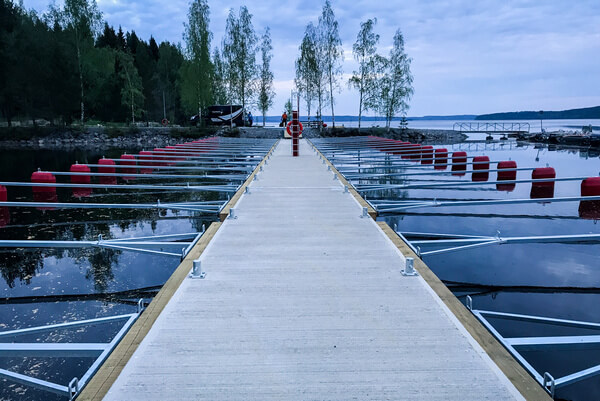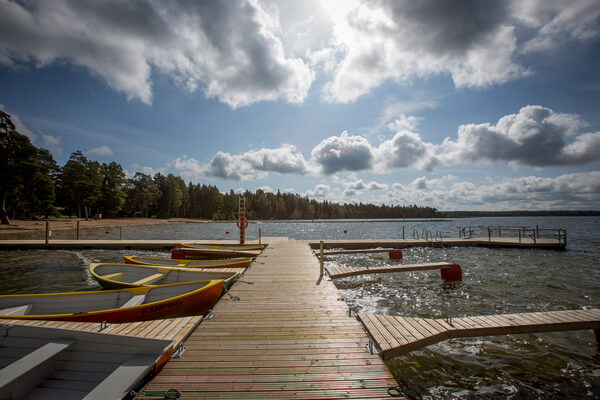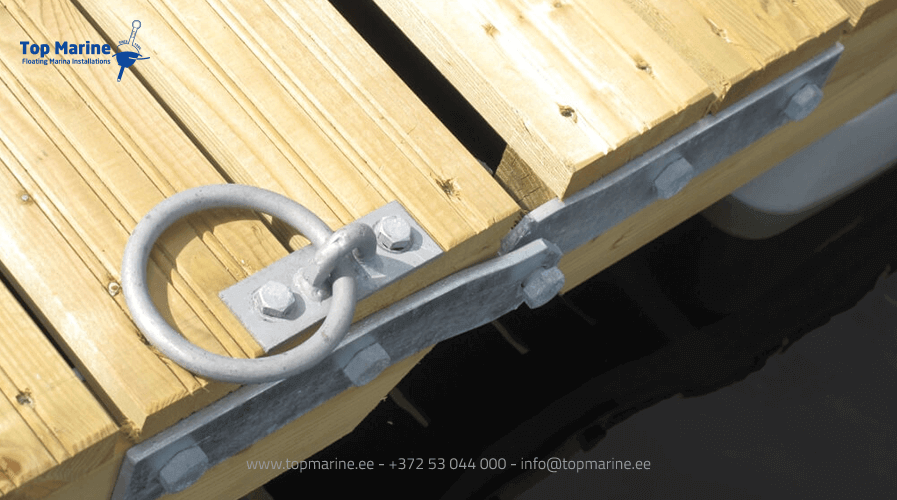Your floating pontoons needs only very little care, but that does not mean that you can just forget about it. Why is this?
Because regular maintenance guarantees that you can enjoy the pontoon boat for a long time, and it is only a matter of getting started as providing proper care is so easy, anyone can do it.
Next, we’ll give you an overview of when and which maintenance work to do to keep your floating pontoon like new.
How often to do pontoons maintenance work?
We recommend doing it twice a year: in spring, before the start of the navigation season, and in autumn, when the season is ending.
What to focus on when doing pontoons maintenance?
As the floating pontoon is in the water year-round and most of the time in motion, special attention must be paid to the decking and the condition of the connections.
Note: Although the following guidelines are fairly universal and applicable to the pontoons of other manufacturers, you should still follow the instructions that came with your product as they clearly state how and what to check in case of specific products.
A pontoon with a concrete surface

Does a pontoon with a concrete surface also require maintenance? With a concrete pontoon, it is usually enough to do a light wash once a year, and this is all it takes.
Wood decking

First time decking maintenance
Our pontoon decking is made of treated pine wood and the finished product contains quite a bit of moisture. Consequently, we recommend that you let the pontoon sit in the sun for awhile before oiling for the first time. Wait until the decking has lost the original greenish tone and looks a little faded.
The first time, apply a rich layer of oil on the decking until wood becomes saturated to achieve adequate protection.
Annual decking maintenance
We recommend you apply oil in the springtime, so you can enjoy the beautiful result throughout the summer. The fresh oil layer will also keep the wood protected from sunlight.
Do the following:
- clean loose dirt from the surface of the pontoon.
- wash the decking with a terrace cleaner. You can achieve a particularly good result with a detergent containing sodium hydroxide, as sodium hydroxide opens the pores of the wood, allowing the oil to penetrate deep into the structure of the boards. Apply the solution to a surface of up to 3 m2 on the entire length of a board and rub the dirt off with a strong brush. Then, rinse with plenty of water.
- allow the board to fully dry.
- apply oil to the decking, preferably on the entire board, as this creates a uniform look without stripes. The amount of oil should be sufficient to saturate the wood. After half an hour, remove excess oil from the surface of the wood with a cloth. If it seems like the decking needs more oil, you can repeat the process.
Note: Sodium hydroxide is a strong base and has a corrosive effect on the skin. Carefully follow the detergent instructions and use the required protective equipment.
Note: When using a pressure washer, make sure that the surface of the wood does not get damaged. Excessive pressure can splinter the boards and ruin the decking.
Decking in the winter
Careful oiling in the spring protects the decking from water and ice penetrating into the boards in the winter months. So, with a little effort, you can reap the rewards for a long time.
If you do not use the floating pontoon in the winter, there is no actual need to clear it from snow. If you are using it, it’s important to ensure that you do not get too carried away when removing packed snow or ice, and do not damage the surface of the decking.
Connections

The floating pontoon is in constant motion when in water due to waves and the wind, and as you know, what moves also breaks. Therefore, it is necessary to regularly check the connections of the hinges, the rubber connections, and the anchoring chains.
What should you monitor when checking? Check that the connections do not have traces of wear and can move effortlessly, and make sure that the fastening bolts are properly tightened.
Regular monitoring of connection points helps prevent breakage and prevents greater damage. Moreover, it is considerably cheaper to replace the tired connections with new ones, if necessary, than to purchase a new pontoon.
Good luck in maintenance!
Feel free to ask help!






